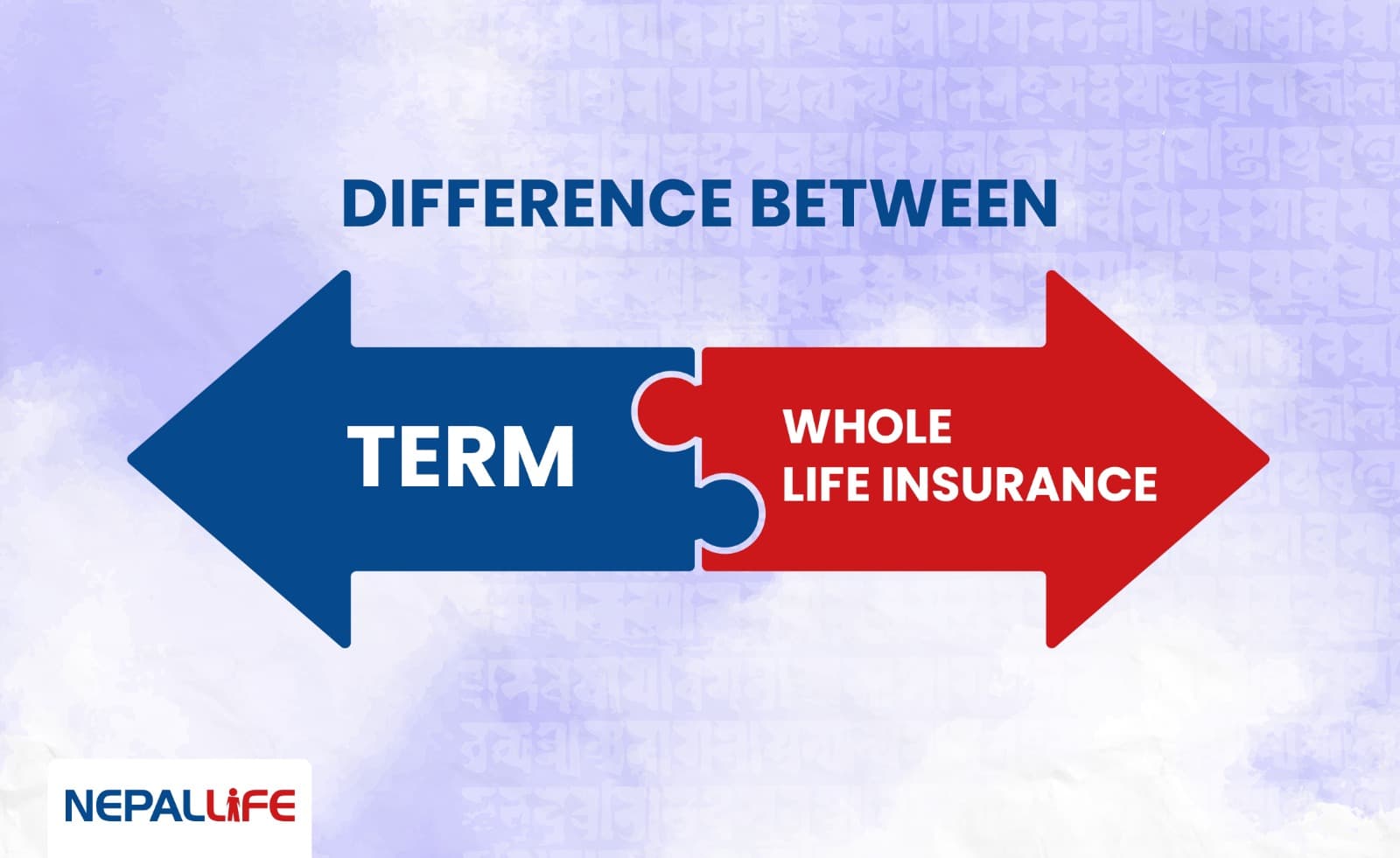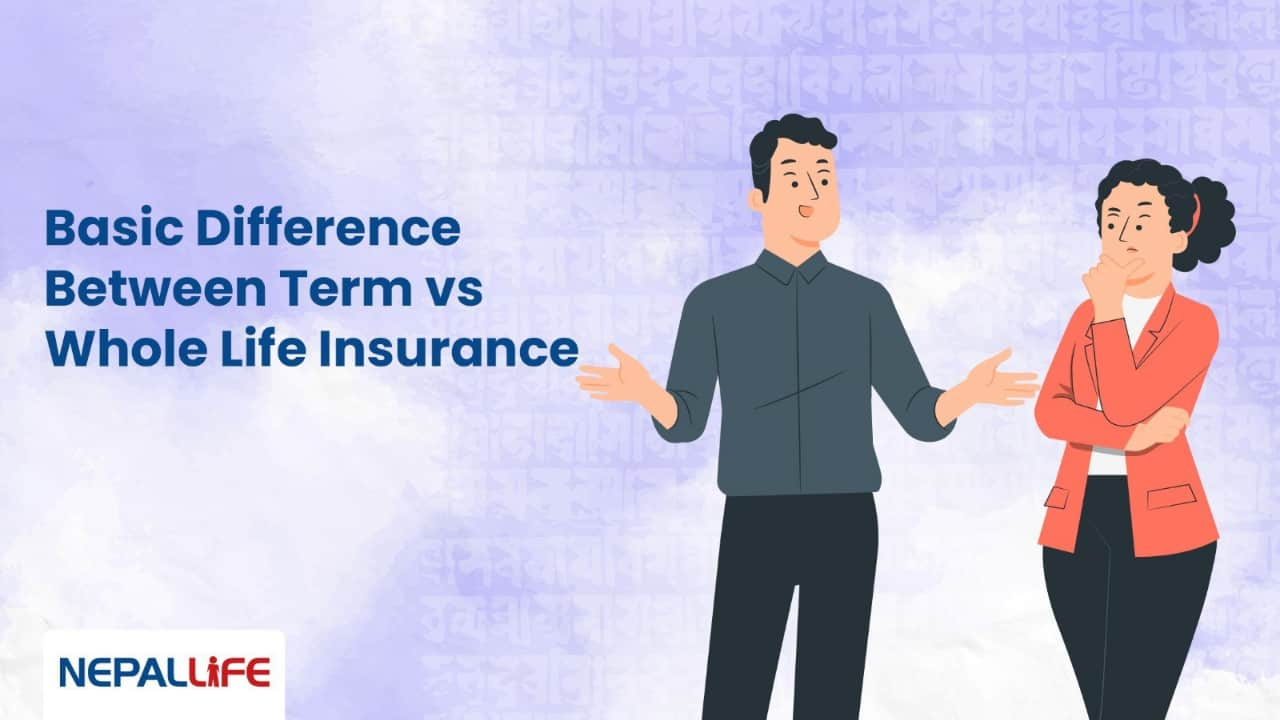
Life insurance is a financial agreement where an insurance company promises to pay a certain amount of money to your family or chosen person if you pass away during the policy period and depending on the type of policy, it may also provide maturity or survival benefits if the insured lives through the policy term.
It provides comfort knowing that your loved ones would still be able to pay for necessities like daily costs, loan payments, or your children’s education even if something were to happen to you.
At Nepal Life Insurance, we provide different life insurance plans for different life stages and goals. Understanding the difference between them might help you choose the right plan.
Types of Life Insurance:
Term Insurance:
The coverage period for Term Life Insurance at Nepal Life typically ranges from 1 to 25 years, depending on the insured’s age and the product chosen. In the event of an unfortunate incident during the policy period, the sum assured is given to the nominee. If the policy term ends without such an event, no maturity benefit is provided.
Term Insurance is simple and affordable and it gives excellent coverage at a reasonable cost. And is ideal for short-term requirements like child education, income protection, or loan security. Nepal Life Insurance offers a different Terms Insurance Plans, with flexible terms and additions like disability coverage or accident.
Whole Life Insurance:
You are protected for the duration of your life with whole life insurance, also known as permanent life insurance. Additionally, it increases cash worth, so you can later receive or borrow money from your policy.
Includes advantages for growth and savings. It is done for lifetime protection. Excellent for long-term planning, such as inheritance or retirement.
Nepal life insurance provide a range of Whole Life Insurance Plans making people choose different plans according to their flexibility.
Key Differences between: Term vs Whole Life Insurance:

| Features | Term Insurance | Whole Life Insurance |
| Premiums | Low premium | Higher premium goes toward the savings and investments |
| Cash Value | No | Yes, it increases with time |
| Payout | Only in the event of a death during the period | Guaranteed at all times (whenever death occurs) |
| Bonuses | No | Yes, but with-profit policies do offer bonuses |
| Use Case | Protection in the short term, debts, education | long-term security, savings and for future legacy |
| Flexibility | Easy and simple to understand but less flexible | Comes with extra benefits and returns like rider and loan options. |
Which One You Should Choose:
These things fully depend on your requirements.
i) Choose Term Life Insurance if you:
- ✓ Want coverage that’s affordable.
- ✓ Require protection for a predetermined amount of time (for instance, until children are grown or debt is settled).
- ✓ Prefer easy and simple policies.
ii) Choose Whole Life Insurance if you:
- ✓ You want lifetime coverage.
- ✓ Considering long-term investments or savings.
- ✓ Able to pay for more expensive premiums.
Conclusion
Term insurance and whole life insurance fulfill different purposes. If you look for affordable insurance to protect your family at certain times such as while repaying a loan or raising kids, a term life insurance plan is a wise option. On the other hand, if you are looking for long-lasting coverage along with extra savings and bonuses, whole life insurance or permanent life insurance is the best choice.
At Nepal Life Insurance, we are dedicated to help you in finding the ideal life insurance based on your needs and goals. Whether you are protecting your family or preparing for what lies ahead, we are here to help you at every step of your life.
Also Read: Top 6 Life Insurance Myths amongst People in Nepal
